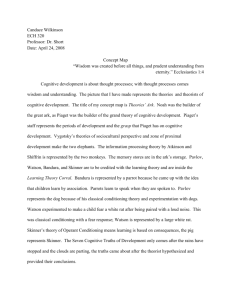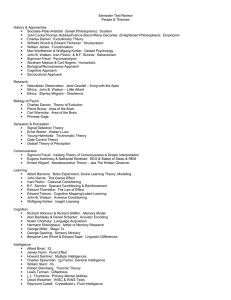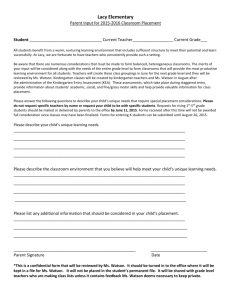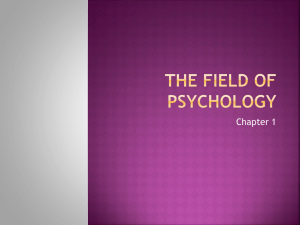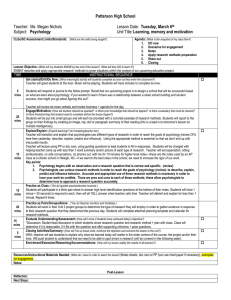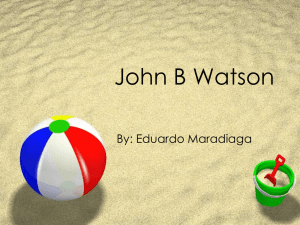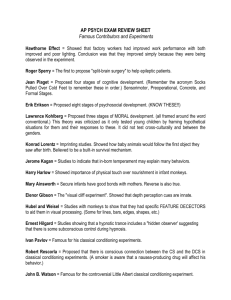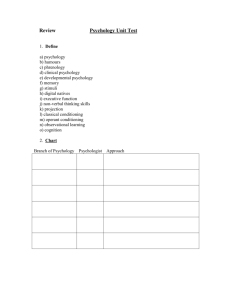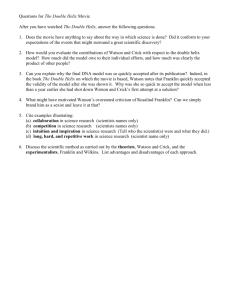Extending Classical Conditioning
advertisement
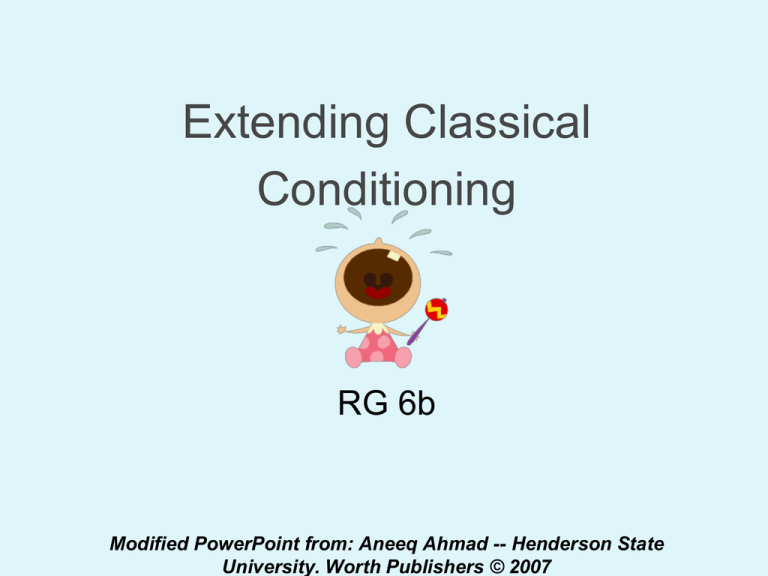
Extending Classical Conditioning RG 6b Modified PowerPoint from: Aneeq Ahmad -- Henderson State University. Worth Publishers © 2007 J.B. Watson’s Psychological Bio ● In 1908, at age 30, Watson was named chair of psychology dept. at John’s Hopkins University, making $3500 a year ● In 1913, he ushered in the era of behaviorism in psychology by writing in 3 sentences what became known as “the behaviorist manifesto”… 1.Psychology’s content should be behavior 2.It’s method should be objective rather than introspective 3.It’s goal should be the “prediction and control of behavior” rather than understanding mental events ● Showing behaviorism’s popularity, Watson was elected APA President in 1915 Little Albert Experiment ● Watson and Rayner (his assistant) conditioned fear in 11-month-old Little Albert UCS UCR Little Albert Experiment NS UCS CS UCR CR ●only took 7 trials for Little Albert to respond to the rat ●Watson and Rayner would strengthen the response every 5 or so days by re-introducing UCS Little Albert ● So what happened to Little Albert??? o Albert did generalize his fear of the white rat to other furry/fuzzy items like Santa’s beard and a fur coat o Albert (and his family) moved away before Watson could “uncondition” the fear…but most psychologists agree that more than likely Little Albert did not remain afraid of furry things WHY???? EXTINCTION…if Watson did not continue to “strengthen” the response (CR) by presenting the UCS, it would more than likely go away in time The Fall and Rise of J.B.Watson ● Shortly after his experiment with Little Albert, Watson became romantically involved with one of his research assistant's - Rosalie Rayner. At the time such behavior was not tolerated (b/c he was married) o Watson was forced to retire from research and psychology in 1930 ● He was employed with the J. Walter Thompson advertising agency where he used techniques from his behavioral psych background to sell products. o Watson showed that people's preferences between rival products were not based on their sensory qualities but on their associations. The Fall and Rise of J.B.Watson ● He went on to develop some of J. Walter Thompson’s most successful campaigns o Maxwell House Coffee – utilizing and popularizing the idea of a “coffee break” o Pond's Cold Cream – using testimonials from the Queens of Romania and Spain o Johnson's Baby Powder – convincing mothers to use the powder after every diaper change ● In 1958, the APA awarded Watson with its gold medal for his contributions to psychology What has Watson’s research taught us? ● Counseling Techniques… o Counterconditioning for phobias and other anxiety disorders Teaches patients to respond in a relaxed manner to the CS…until eventually the CR is extinct ● Taste-Aversions… o Avoid a particular food because of an unpleasant experience with that food Can occur after a significant delay, unlike most cases of classical conditioning Extending Pavlov’s Understanding Pavlov and Watson considered consciousness or the mind not fit for scientific study of psychology. However, they underestimated the importance cognitive processes and biological constraints upon learning. Cognitive Influences Early behaviorists believed that behaviors of various animals could be reduced to mindless mechanisms. Robert Rescorla believed this was basically correct, but the idea was too limited… Contingency Model of CC ● A is contingent upon B -- A depends upon B and vise versa…in other words, the presence of the CS (NS) must predict the presence of the UCS or else there won’t be a response ● learning occurs in situations where the relationship between the CS and UCS is clear and predictable – it is expected Contingency Model Example ● For 3 days straight, whenever the phone rings in AP Psych it is for you and you are called to Mr. Brandt’s office o The next day when the phone rings in AP Psych, you… Get out of your seat and begin to head out the door because you assume the phone call is for you to go to Mr. Bosco’s office WHY???? Because A (phone ringing) is contingent upon B (you being called to the office) because whenever A (phone rings), B (you being called to the office) occurs Contingency Model Example Let’s change the situation slightly… ● For those same 3 days, whenever the phone rings in AP Psych, a different student is called to the counselor’s office, the attendance office or Mr. Brandt’s office…that last call was for you to go to Mr. Brandt’s office o What would you assume when the phone rings on the 4th day in AP Psychology??? NOTHING… WHY???? There isn’t a strong connection between the phone ringing and you being called to the office…one event isn’t going to predict the other Our reactions are not just “knee-jerk” reactions…but based on our expectations of what will happen Cognitive Influences Not necessarily CC…shows the idea that learning is not just a mindless function but includes cognitive functions. INSIGHT LEARNING ● Form of cognitive learning in which problem solving occurs by means of sudden reorganization of perceptions o Wolfgang Kohler – found chimps could solve complex problems by combining simpler behaviors they had previously learned separately One chimp, Sultan, learned to pile boxes or use a stick to get to dangling bananas When Kohler hung the bananas higher, Insight Learning -- Kohler Here are some photos of Kohler’s chimps… Biological Influences Animals and humans are biologically prepared to make certain connections more easily than others…these connections help keep us alive! Associating strange tastes with feelings of sickness or avoiding a food after it has made us ill have helped us survive as a species…so taste aversions seem to be biologically programmed in to humans and (some) animals. Question 1. The predictability rather than the frequency of CS-US associations appears to be crucial for classical conditioning. This highlights the importance of _________ in conditioning. A. shaping B. discrimination C. generalization D. cognitive processes Question 2. A person adhering to the cognitive perspective would be likely to emphasize that classical conditioning depends on A. an organism's active behavioral responses to environmental stimulation. B. the amount of time between the presentation of the CS and the US. C. how frequently an organism is exposed to an association of a CS and a US. D. an organism's expectation that a US will follow a CS. Question 3. Children learn to fear spiders more easily than they learn to fear flowers. This best illustrates the impact of _______ on learning. A. spontaneous recovery B. conditioned stimulus C. cognitive processes D. biological predispositions
